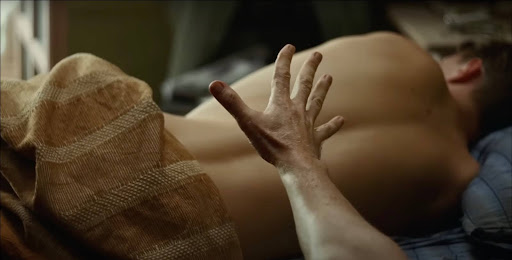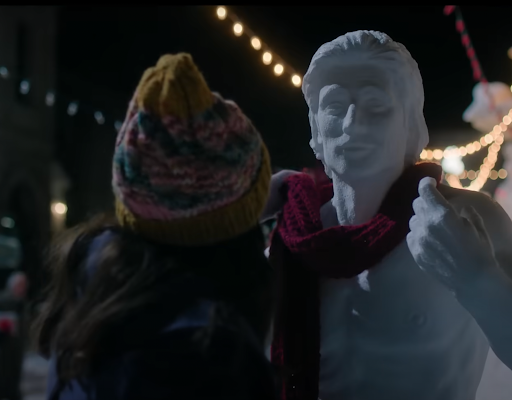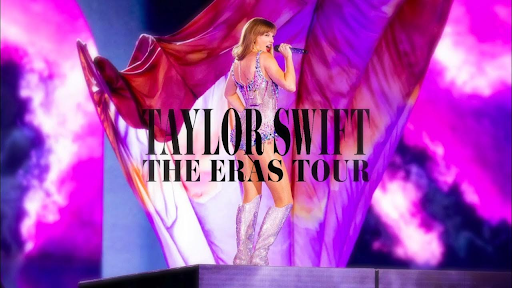“Diamonds, Rings & Courts: Sport is More Than a Game,” currently being shown in Dr. M. T. Geoffrey Yeh Art Gallery in Sun Yat-Sen Hall, is an exhibition that focuses on the unexpected ways that sports are embedded within our culture, and present in our everyday lives. The pieces within the exhibition show are visual manifestations of how sports have historically existed far beyond the confines of basketball courts and stadiums, and continue to do so.
Ronny Quevedo’s “(lyra)” is one of the first pieces visitors see when walking into the gallery. Its design is reminiscent of a basketball court, with a circle in the center flanked by two starbursts. While the artist does not include a statement for this work, its title suggests a reference to the Lyra Constellation. “(Lyra)” seems to parallel the constellation with a basketball court, perhaps implying that basketball itself is as ubiquitous as the constellations in the night sky.
Lee Walton’s “Red Storm Basketball Drawings (2016-17 Season)” is a series of twenty-one black and white angular drawings, overlaid with blocks of washed gray. The lines in each drawing are both angular and rounded, while the patches of gray underlying it are softer and more blended. The drawings, which are visually representative of “the actions of Red Storm athletes,” according to the artist’s statement, seem reminiscent of the lines on a basketball court.
The process behind “Red Storm Basketball Drawings” loans a new meaning to it: Walton’s appropriations of certain pieces by Robert Rauschenberg, Henri Matisse and Agnes Martin, as well as his imitation of traditional printmaking, seem to imbue a question into the work.
It asks us not only about what the intersections between art and basketball are, but about what even constitutes authenticity in art.
Dave Johnson’s “Untitled” is a collage with three identical images of a St. John’s basketball player in varying sizes and opacities, with names typed in all-caps overlaid and a home/visitor scoreboard at the top that reads “0 – 24.” The tone of this work is less revelatory in nature and more solemn and reverent, meant to honor the lives of basketball players who lost their lives while still playing. Simply put, it is a straightforward humanization of athletes that many of us may forget when watching them perform what can seem to be superhuman feats of strength and agility.
The most imposing piece in the gallery, which is on display until Nov. 17, is Andrea Katz’s “Swoosh,” a gown constructed from multicolored sports apparel such as jerseys and sports t-shirts.
The artist’s statement on the matter explains that in this work, Katz meant not to draw connections to the global exploitation and devaluation of women’s labor, but rather to expose these existing connections.
The low appreciation and viewership for women’s sports is tied to the creation of these garments, in that women were underpaid and therefore exploited for their labor in both situations. Without the context of the artist’s statement, it is clear that the large size of the garment means it is most likely never to be worn—this points to a sense of wastefulness and extravagance. Katz poses a commentary, not only on women within sports, but crafts a criticism of these normalized attitudes within popular culture.
A piece which brought an added historical context to the exhibition was Gina Adams’ “O$ Osage 6,” a decorated black and white photograph of a group of Native American girls in old-fashioned basketball uniforms and their coach. The photograph itself is cut to the contours of their bodies and mounted on a sienna-colored cloth; swirling designs encircle them.
Adams brings to the forefront a chapter of American history that is rarely talked about: the “re-education” of Native Americans meant to strip them of their culture to effectively assimilate them.
She combines this with the concept of these girls having been a team, facing racism while traveling to play basketball. With this piece, Adams conveys that sports have never existed in a vacuum.
It, like any other aspect of American culture, is a reflection of its sociopolitical landscape.
This in itself is a central idea that “Diamonds, Rings & Courts: Sport is More Than a Game” communicates.
While the individual pieces in the collection vary in tone and intent, they are cohesive in that they visually remind audiences that sports are not an isolated institution within society.







